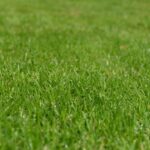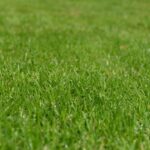Soil erosion can be a slow process that continues relatively unnoticed or can occur at an alarming rate, causing serious loss of topsoil. Soil compaction, low organic matter, loss of soil structure, poor internal drainage, salinisation and soil acidity problems are other serious soil degradation conditions that can accelerate the soil erosion process. David Curtis reports.
Soil erosion is a naturally occurring process that affects all landforms by the natural physical forces of water and wind or through forces associated with human activity.
Erosion, whether it is by water, wind or tillage, involves three distinct actions – soil detachment, movement and deposition. Topsoil, which is high in organic matter, fertility and soil life, is relocated elsewhere “on-site” where it builds up over time or is carried “off-site” where it fills in drainage channels. Soil erosion reduces plant growth and contributes to the pollution of adjacent watercourses, wetlands and lakes.
Water Erosion
The widespread occurrence of water erosion combined with the severity of on-site and off-site impacts have made water erosion the focus of soil conservation especially after the UK’s extended winter this year.
The rate and magnitude of soil erosion by water is controlled by the following factors:
Rainfall and Runoff
The greater the intensity and duration of a rainstorm, the higher the erosion potential. The impact of raindrops on the soil surface can break down soil aggregates and disperse the aggregate material. Lighter aggregate materials such as very fine sand, silt, clay and organic matter are easily removed by the raindrop splash and runoff water; greater raindrop energy or runoff amounts are required to move larger sand and gravel particles.
Soil movement by rainfall (raindrop splash) is usually greatest and most noticeable during short-duration, high-intensity thunderstorms. Although the erosion caused by long-lasting and less-intense storms is not usually as spectacular or noticeable as that produced during thunderstorms, the amount of soil loss can be significant, especially when compounded over time.
Surface water runoff occurs whenever there is excess water on a slope that cannot be absorbed into the soil or is trapped on the surface. Reduced infiltration due to soil compaction, crusting or freezing increases the runoff. Runoff from agricultural land is greatest during spring months when the soils are typically saturated, snow is melting and vegetative cover is minimal.
Soil Erodibility
Soil erodibility is an estimate of the ability of soils to resist erosion, based on the physical characteristics of each soil. Texture is the principal characteristic affecting erodibility, but structure, organic matter and permeability also contribute. Generally, soils with faster infiltration rates, higher levels of organic matter and improved soil structure have a greater resistance to erosion. Sand, sandy loam and loam-textured soils tend to be less erodible than silt, very fine sand and certain clay-textured soils.
 Human activity can reduce soil organic matter levels, cause poor soil structure, or result in soil compaction, contribute to increases in soil erodibility. As an example, compacted subsurface soil layers can decrease infiltration and increase runoff. The formation of a soil crust, which tends to “seal” the surface, also decreases infiltration. On some sites, a soil crust might decrease the amount of soil loss from raindrop impact and splash; however, a corresponding increase in the amount of runoff water can contribute to more serious erosion problems.
Human activity can reduce soil organic matter levels, cause poor soil structure, or result in soil compaction, contribute to increases in soil erodibility. As an example, compacted subsurface soil layers can decrease infiltration and increase runoff. The formation of a soil crust, which tends to “seal” the surface, also decreases infiltration. On some sites, a soil crust might decrease the amount of soil loss from raindrop impact and splash; however, a corresponding increase in the amount of runoff water can contribute to more serious erosion problems.
Past erosion also has an effect on a soil’s erodibility. Many exposed subsurface soils on eroded sites tend to be more erodible than the original soils were because of their poorer structure and lower organic matter. The lower nutrient levels often associated with subsoils contribute to lower crop yields and generally poorer crop cover, which in turn provides less crop protection for the soil.
Slope Gradient and Length
The steeper and longer the slope of a field, the higher the risk for erosion. Soil erosion by water increases as the slope length increases due to the greater accumulation of runoff. Consolidation of small fields into larger ones often results in longer slope lengths with increased erosion potential, due to increased velocity of water, which permits a greater degree of scouring (carrying capacity for sediment).
Cropping and Vegetation
The potential for soil erosion increases if the soil has no or very little vegetative cover of plants and/or crop residues. Plant and residue cover protects the soil from raindrop impact and splash, tends to slow down the movement of runoff water and allows excess surface water to infiltrate.
The erosion-reducing effectiveness of plant and/or crop residues depends on the type, extent and quantity of cover. Vegetation and residue combinations that completely cover the soil and intercept all falling raindrops at and close to the surface are the most efficient in controlling soil erosion (e.g., forests, permanent grasses). Partially incorporated residues and residual roots are also important as these provide channels that allow surface water to move into the soil.
Hydroseeding Supplies UK (HSUK) is one of the largest providers of Hydroseeding mulches, consumables and specialist erosion control products in Europe.
HSUK working alongside Profi le Products LLC who manufacture the market’s broadest line of erosion and sediment control products, turf establishment products and associated consumables to control erosion and accelerate seed germination.
HSUK are the UK’s exclusive UK distributors of Profi le Products
01684 212025
info@hydroseedingsupplies.co.uk
CHECK OUT THE LANDSCAPERS DIGITAL FOOTPRINT


